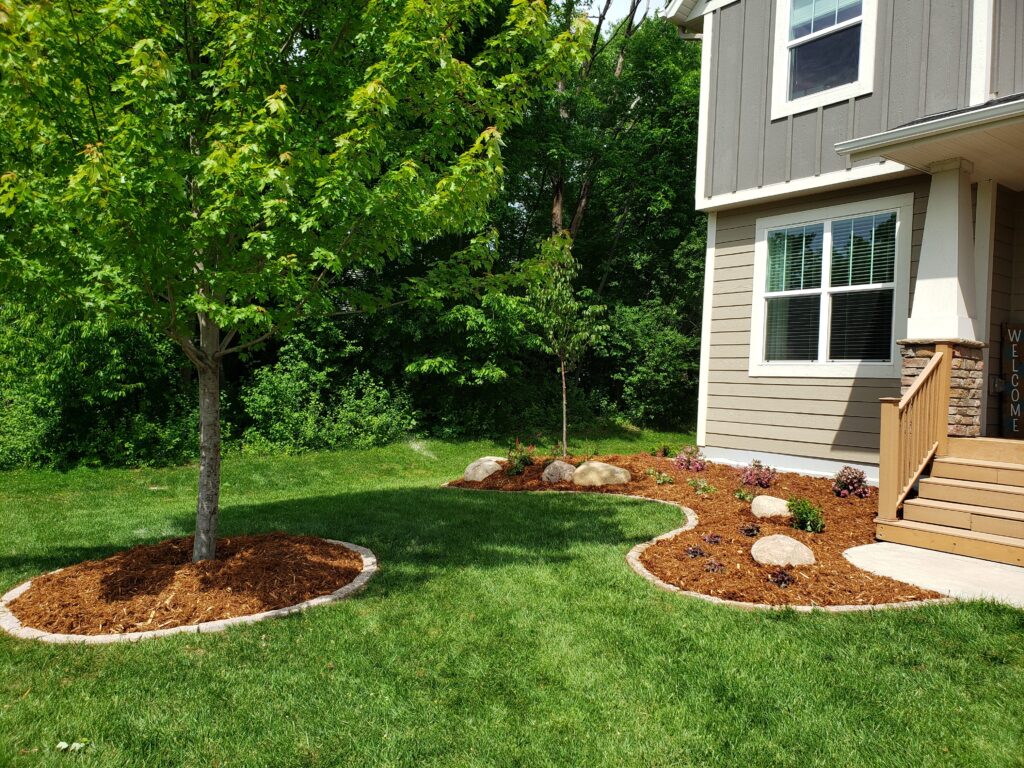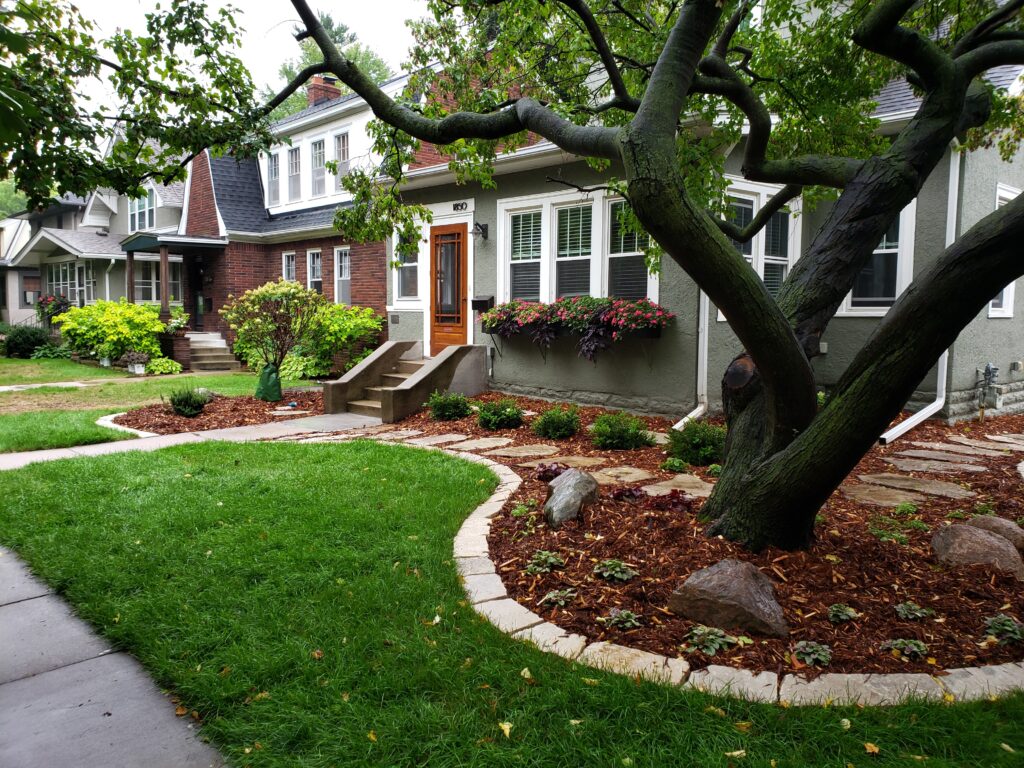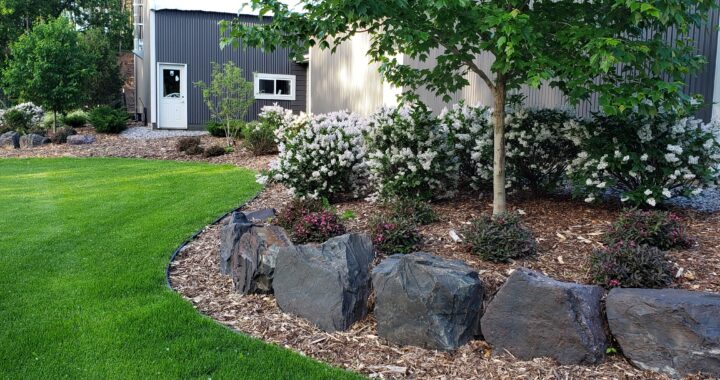Spring is right around the corner, folks!! As the temperatures begin to warm and the snow finally melts, you want to make sure that you take certain steps to ensure the health of your lawn and landscaping beds through the season. Here’s our simple checklist to help you get started in caring for your lawn and landscaping beds this spring:

- Planting bed clean up. First thing’s first, rake up any leaves, twigs, and other debris that may have accumulated over the winter. You’ll also want to loosen the topsoil to prepare for spring planting!
- Prune your shrubs and trees. Trim back any dead or damaged branches from shrubs and trees to promote healthy growth. Cut back any overgrown plants that may be blocking the sun or creating a hazard.
- Aerate if needed. In general, you want to wait until after spring to aerate (to avoid encouraging weed growth). But if your soil is compacted enough to impede grass growth, you should aerate your lawn. This will improve soil drainage and encourage healthy root growth.
- Test Your Soil: Test the pH balance of your soil to determine whether or not you need to apply a fertilizer. In general, grass likes a neutral pH and if your soil is outside this range, you’ll want to fertilize.
- Fertilize your lawn. Based on the pH balance of your soil, choose the right kind of fertilizer that will bring your soil back into balance and promote healthy growth.
- Apply a pre-emergent herbicide. Pre-emergent herbicides address weeds before their seedlings can even emerge. Unless your lawn is badly overgrown with weeds, stick to spot-spraying weeds rather than over-spraying the entire lawn.
- Apply post-emergent herbicides or pull weeds. For those weeds that make their first appearance in spring, you can address them by either applying a post-emergent herbicide or by manually digging up the weeds by hand.
- Reseed bare patches. Reseed any areas of your lawn that may have died over the winter. (However, if you’re going to use pre-emergent herbicide, avoid reseeding until fall.)
- Check your irrigation systems. Before you start planting, inspect your sprinkler system for any damage it may have sustained over the winter season. Address any issues to make sure it’s working properly.
- Mulch your landscaping beds/flower beds. Adding mulch will help your landscaping beds retain moisture, prevent weeds, and look fresh for the new season.
- Start planting. Once you’ve properly prepped your lawn and landscaping beds, it’s time for the fun part! Now you can plant annuals, perennials, and bulbs to add pops of color to your landscape.
- Edge your lawn. Create a neat, clean look with sharp lines by taking an edger to the borders of your lawn.
- Add new features. Consider adding new features, such as a water feature, seating area, retaining wall, or a new patio to enhance the beauty of your landscape.
- Get on a maintenance schedule. Want to make sure your lawn and landscaping beds are the talk of the town? Hire a professional for weekly or monthly lawn and landscape maintenance. Regular maintenance will keep your lawn and planting beds looking fresh and cared for all season long.
By following these tips, you can help ensure that your lawn and landscape look their best throughout the spring season and beyond!

Looking For a Landscape Professional?
At McDonough Landscaping, our weekly and monthly maintenance services will keep your landscaping beds and lawn looking their best. Our experienced landscaping professionals will prune, clean up, cultivate, weed, and monitor your plants’ health, so you don’t have to! Give us a call today at (651) 755-7901 or contact us online to get on our maintenance schedule.
